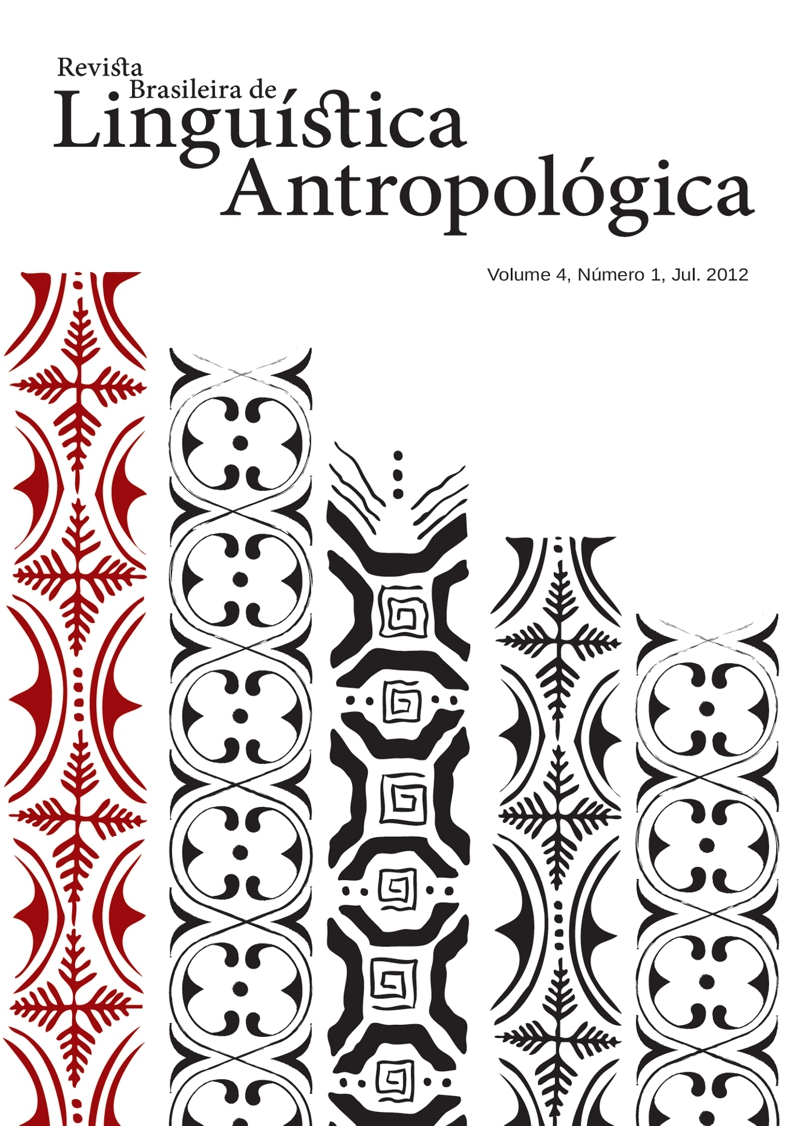Mitos e ritos
DOI:
https://doi.org/10.26512/rbla.v4i1.20668Keywords:
Nazalization. Morpho-phonological processes. Sound changes. Awetí. Tupian Stock.Abstract
This paper describes several synchronic processes of nasalization in Awetí, Tupian Stock, and puts forward six phonological rules, and their order of application, in order to describe the regular process of nasalization of the language. Some diachronic considerations are also presented, based on the comparison with some Tupí-Guaranian languages, and a couple of diachronic rules corresponding to the Proto-Awetí-Tupí-Guaraní are suggested.
Downloads
References
Bíblia Sagrada. 1993. Tradução de João Ferreira de Almeida. Revista e atualizada no Brasil. 2.ed. São Paulo: Sociedade Bíblica do Brasil.
Campbell, Joseph. 1994. As Máscaras de Deus. Mitologia Oriental. Tradução de Carmen Fischer. São Paulo: Palas Athena.
Cuche, Denys. 2002. A noção de cultura nas ciências sociais. 2.ed. Tradução Viviane Ribeiro. Bauru, SP: EDUSC.
Junqueira, Carmen e Vaneska Taciana Vitti. 2009. O Kwaryp kamaiurá na aldeia de Ipavu. Estudos Avançados 23, 65. São Paulo, Universidade de São Paulo, Instituto de Estudos Avançados.
Junqueira, Carmen. 2009. Mitos Kamaiurá, In: Eugênia Paredes e Denise Jodelet (Orgs.). Pensamento mítico e representações sociais. Cuiabá: EdUFMT/FAPEMAT/ EdIUNI.
Van Gennep, Arnol. 1978. Os ritos de passagem. Petrópolis, RJ: Vozes.
Downloads
Published
How to Cite
Issue
Section
License
Copyright (c) 2013 Revista Brasileira de Linguística Antropológica

This work is licensed under a Creative Commons Attribution 4.0 International License.
Authors who publish in RBLA agree to the following terms:
a) Authors maintain the copyright and grant the journal the right of first publication, and the work is simultaneously licensed under the Creative Commons Attribution License, which allows the sharing of the work with recognition of the authorship of the work and initial publication in this journal.
b) Authors are authorized to assume additional contracts separately, for non-exclusive distribution of the version of the work published in this journal (eg, publish in an institutional repository or as a book chapter), with recognition of authorship and initial publication in this journal.
c) Authors are allowed and encouraged to publish their work online (eg, in institutional repositories or on their personal page) at any point before or during the editorial process, as this can generate productive changes, as well as increase impact and citation of the published work.







